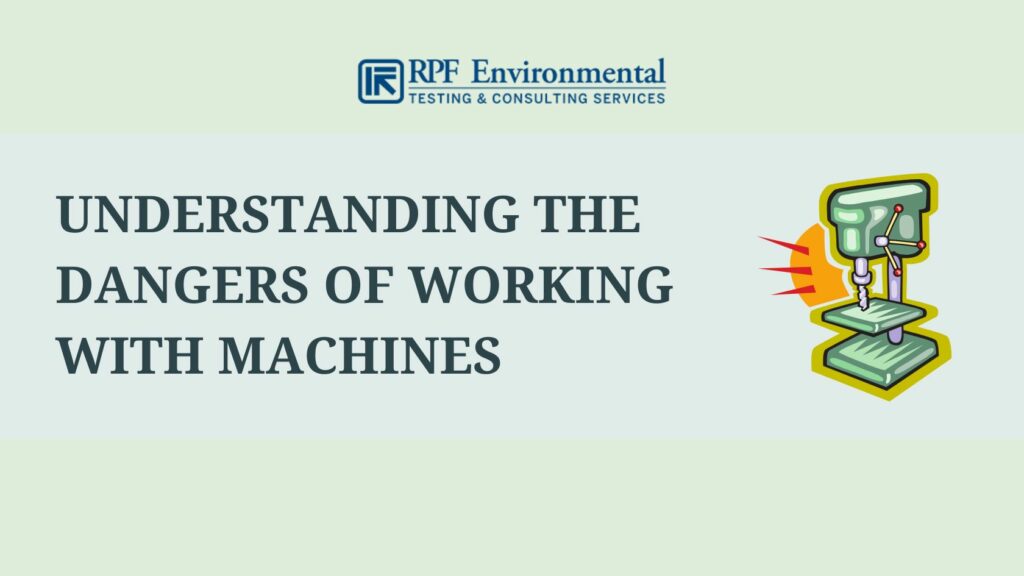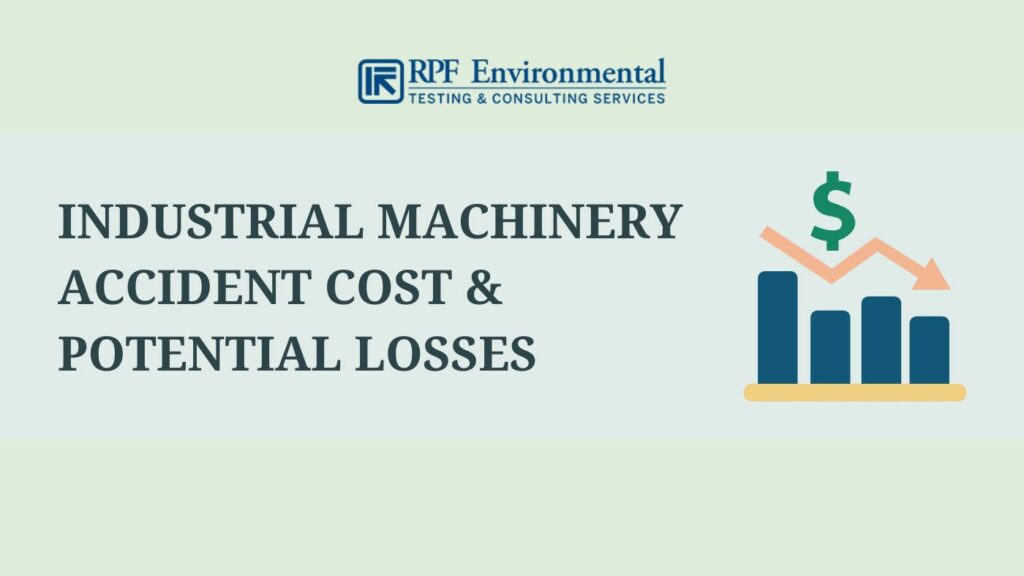Regardless of OSHA’s strict machine safety regulations and how much diligence manufacturers give in designing machines that will protect operators, machine guarding injuries do happen. In fact, OSHA states that:
“Workers who operate and maintain machinery suffer approximately 18,000 amputations, lacerations, crushing injuries, abrasions, and over 800 deaths per year.”
Improper maintenance and unsafe machine operation are among the top causes of these injuries. This is why it is important for employers to maintain safety guards or barriers to prevent workers from getting exposed to machine hazards.
In this article, we will discuss the causes of machine guard accidents, mechanical hazards, the importance of safeguarding and proper worker training, avoiding accidents, and more!
Understanding the Dangers of Working With Machines
“Amputation is one of the most severe and crippling types of injuries in the occupational workplace, and often results in permanent disability.” – OSHA on Machine Guarding

Machines are hazardous especially when operating at high pressures and speeds which can cause severe injuries within seconds. While they play an important role in the efficiency of production processes, their moving parts can crush hands or fingers and cause amputations, burns, and blindness. These are costly and can increase the compensation premiums of workers. (More on machinery accident costs and potential losses later.)
In addition, severe and crippling injuries, like amputations, result in irreversible changes including mental trauma and permanent disability. Some of the most notable industrial accidents are:
- Kim Duong – a 60-year-old worker at John Crowley Inc. who was crushed by two 632-pound metal guards.
- Kina Repp – had her left arm amputated while cleaning conveyor belts without any training and is now an advocate for workplace safety.
Facts: Industrial Machinery Accidents Statistics
- OSHA – approximately 18,000 injuries and more than 800 deaths each year.
- Bureau of Labor Statistics (BLS) – 58% of amputations in 2018 are machine-related resulting in days away from work.
Causes of Machine Guarding Accidents
As for the causes of machine guard accidents, these are often caused by:
- Workers operating unguarded or poorly guarded machinery (inadequate safeguards, not guarding all of the operating parts of machines, among other things).
- Improperly installed safeguards which create additional hazards
- Disabled safeguards.
- Failure to re-evaluate safety procedures even when injuries have already occurred.
- Machines are not properly locked out before maintenance or servicing activities.
- Lack of or inadequate worker training regarding machine and safety guard operation.
Machine/Amputation Hazards: Where Do They Occur?
Amputations are among the most severe workplace injuries that employers should protect their workers from. This is why it is important that you identify amputation hazards in your machines and make sure that they are properly safeguarded.
1. Hazardous Mechanical Components
There are three categories of mechanical components that create amputation hazards:
- Point of Operation – components that perform work on materials
- Power-Transmission Apparatuses – Components transmitting energy, connecting rods, flywheels, pulleys, chains, belts, couplings, cams, and spindles
- Other Moving Parts – Moving machine components (auxiliary components, rotating, reciprocating, rotating, and transverse-moving parts)
NOTE: You need to safeguard any machine components, processes, or functions that can cause injury. Read more on the requirements for machine guarding here.
2. Examples of Hazardous Machines
Below are the common machines that cause amputations:
- Shears
- Slitters
- Grinders
- Milling Machines
- Drill Presses
- Meat-Cutting Band Saws
- Meat Grinders
- Food Slicers
- Roll-Forming & Roll-bending Machines
- Printing Presses
- Powered & Non-powered Conveyors
- Power Press Brakes
- Mechanical Power Presses
3. Hazardous Machine Operations
Normal operations can also cause amputations including materials handling operations and using doors, forklifts, and trash compactors as well as powered or non-powered hand tools.
Aside from normal operations, activities that involve stationary machines can also cause amputations including the following:
- Clearing jams
- Setting up
- Preparing
- Threading
- Adjusting
- Lubricating
- Cleaning
- Maintaining
NOTE: Consult OSHA’s requirements for specific machines to guarantee compliance with their standards.
Industrial Machinery Accident Cost & Potential Losses: The Importance of Machine Safeguarding in Ensuring Worker Safety

According to the Industrial Equipment News (IEN), machine safeguarding can reduce operating costs by eliminating direct and indirect costs of accidents while improving employee morale and productivity.
Below are the key points from IEN’s discussion about the true cost of industrial machinery accidents.
- Liberty Mutual report: Employers paid $48.6 billion for productivity losses, wage, administrative expenses, and medical expenses for hurt workers.
- Colorado State University study: Estimated a total of $128 billion for direct and indirect costs involving workplace injuries.
- National Safety Council (NSC): Lost time associated with average injuries can cost up to $30,000.
- The actual cost of accidents can be 4-10 times the direct cost given by insurance companies due to these additional fees and losses:
- OSHA’s penalties for machine safeguarding violations.
- Legal fees spent and wasted management time.
- Dramatically rising insurance rates.
- Investments for the company’s growth being diverted to accident costs.
- Significant drops in productivity and employee morale.
- Negative publicity that will ruin the company’s name.
- Losing bids due to a poor safety record.
- Higher outsourcing costs for works that are performed on machines under investigation.
RPF Environmental can survey your machines and perform risk assessments to ensure the success of your workplace safety procedures.
Risk assessment is a crucial step in implementing workplace safety. It is a process that identifies, assesses, and documents machine operation hazards as well as quantifies and prioritizes risks based on their ranking for a more effective machine safeguarding system.
Mistakes You Should Avoid to Prevent Machine Safeguarding Accidents
Here are a few common mistakes that can lead to workplace injuries and accidents:
- Failure to examine the compliance of your machines with OSHA’s machine safeguarding requirements including safeguard material and part replacement requirements
- Not ensuring that the safety guards are in place before use
- Not using the right type/s of safeguards for your machines
FAQs
These include hazardous mechanical components and operations such as points of operation, power-transmission apparatuses, and other moving parts.
Amputations, crushing injuries, lacerations, and abrasions are the most common machine-related injuries.
The five main types of machine safeguards are guards, devices, safeguards by machine location or distance, automated feeding and ejection mechanisms, and miscellaneous aids. You can read more in our discussion regarding the types of machine safeguarding.
Let RPF Environmental Help You Implement Effective Machine Safeguarding Procedures to Maximize Worker Safety
Injuries can be completely prevented and costly lawsuits can be avoided with proper machine safeguarding and risk assessment. Working with a professional that can help you with the implementation of your safety procedures especially when it comes to industrial machines will make a big difference. Since 1991, we have helped thousands of satisfied clients in the New England region.
Contact RPF Environmental now for more information!




